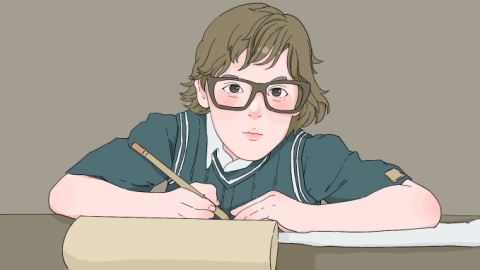How to Correct Vision for Myopia in Children
Generally, childhood myopia may be caused by rapid axial eye growth, poor eye habits, genetic factors, uncorrected refractive errors, or pathological myopia. It is recommended to seek timely medical attention, identify the cause, and then correct the condition through general treatments, medications, or surgical interventions under a doctor's guidance. A detailed analysis is as follows:

1. Rapid axial eye growth: During the developmental stage of a child's eyes, if the axial length exceeds the normal range, parallel light rays will focus in front of the retina, causing myopia, commonly known as axial myopia. Regular vision examinations are necessary, and once myopia is diagnosed, timely wearing of properly prescribed glasses is important to correct vision and delay further axial elongation.
2. Poor eye habits: Prolonged near-work activities such as reading or using electronic devices cause continuous tension in the ciliary muscles and decreased lens accommodation ability, leading to myopia, often accompanied by dry eyes. Correct reading and writing posture should be maintained with a distance of 33 cm between the eyes and the book. After every 30 minutes of near work, it is recommended to look into the distance for 10 minutes. Daily screen time should be limited to no more than one hour.
3. Genetic factors: If one or both parents are myopic, the child's risk of myopia increases, with earlier onset and faster progression. These children require greater emphasis on early vision protection, regular refractions, and wearing orthokeratology lenses at night to maintain clear unaided vision during the day, effectively slowing the progression of myopia.
4. Uncorrected refractive errors: Failure to timely correct pseudomyopia may lead to permanent myopia, with gradual vision deterioration. Under a doctor's guidance, medications such as compound tropicamide eye drops, racemic anisodamine eye drops, or atropine sulfate eye drops can be used to relax the ciliary muscles. Combined with eye massage and distant-viewing exercises, pseudomyopia can be improved, preventing its progression to true myopia.
5. Pathological myopia: Caused by ocular or systemic diseases, this type of myopia progresses rapidly and is accompanied by fundus lesions, affecting visual correction outcomes. In addition to wearing high-strength corrective glasses, retinal laser photocoagulation may be required to seal retinal holes and prevent retinal detachment. Regular postoperative fundus examinations are necessary to monitor myopia progression.
In daily life, encourage children to participate in outdoor activities for at least two hours daily, allowing their eyes to be exposed to natural light. Increase dietary intake of nutrients such as lutein and vitamin A found in foods like carrots, blueberries, and egg yolks to provide essential nourishment for eye health. Regular vision screenings should be conducted for early detection and intervention, ensuring optimal visual health in children.






